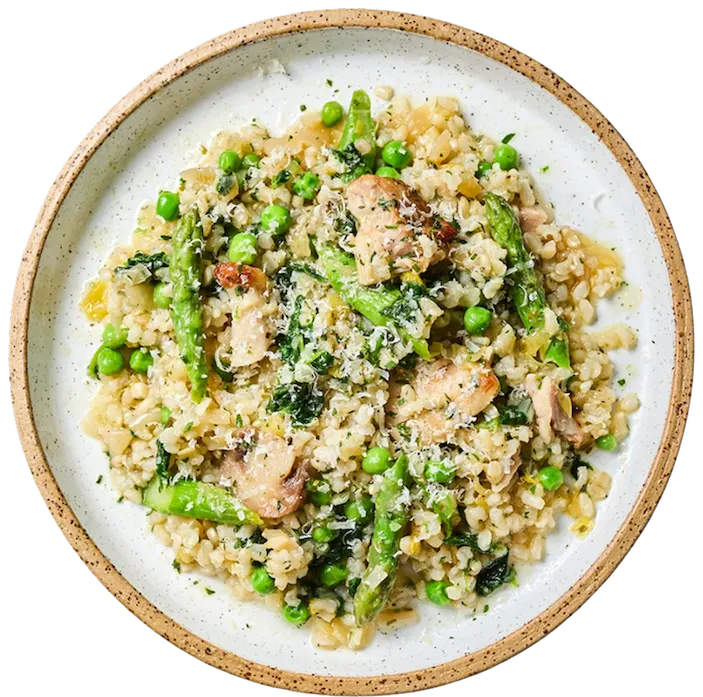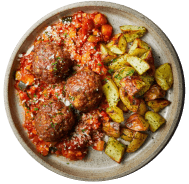What To Eat On A Low FODMAP Vegan Diet
How Can I Eat Healthy On A Low FODMAP and Vegan Diet?
Ensuring you get the right nutrients on any kind of diet is essential - let alone combining more than one! Our guide aims to outline what foods you can eat while following a vegan and low FODMAP diet, including vegan and low FODMAP protein sources, calcium sources and iron sources.
If you are vegan and want to start following a low FODMAP diet, it requires careful planning to ensure you will have a nutritionally balanced diet. As FODMAPs are mainly found in plant-based foods (with the exception of lactose in dairy products), it can make it more difficult to get enough protein in your diet. You also need to consider micronutrients including vitamin B12, vitamin D, iron, calcium, zinc, and omega-3 fatty acids.
In this blog post, dietitian Mairi Huntly suggests some suitable foods to ensure you are getting enough of key nutrients needed for good health.
Low FODMAP protein sources
Soy products:
Although whole soybeans contain significant amounts of galacto-oligosaccharides (GOS), many products made from soybeans are actually low in FODMAPs. These include:
- Firm tofu
- Tempeh
Protein-rich wholegrains:
These include:
- amaranth
- buckwheat
- quinoa
- wild rice
- popped corn
- oats
Pulses and legumes:
These are high in GOS, however, canned pulses and lentils are lower in FODMAP and therefore can be included in small amounts.
Nuts:
Nuts including brazil nuts, peanuts, macadamias, pecans, and walnuts are all low FODMAP and contain good amounts of protein.
Seeds:
Sunflower seeds, pumpkin seeds, chia seeds, and sesame seeds are all suitable.
Lysine:
Meals should also contain good sources of the amino acid lysine. Low FODMAP sources include firm tofu, some nuts, and seeds.
Low FODMAP calcium sources
The calcium requirement for adults is 700mg per day. The aim is to have 3 portions of calcium-rich foods per day.
Milk Alternatives
Suitable milk alternatives include nut milk (almond/macadamia), hemp milk, quinoa milk, and rice milk. It is important to check that the milk is fortified with calcium (120mg of calcium per 100ml of milk).
Soy milk in the UK is made from the soybean and therefore need to be limited as it contains GOS.
Cheese
Vegan cheese tends to lack information on calcium content so don’t assume vegan alternative to diary will meet your calcium needs.
Other sources of non-dairy calcium
The following foods contain significant calcium-rich sources:
- Coconut yoghurt fortified with calcium (Check ingredients for hidden FODMAPs such as inulin).
- Firm tofu
- Kale
- Sesame seeds
- Tahini
- Tempeh
Low FODMAP Iron sources
Iron found in plant-based foods (non-haem iron) is not absorbed as well as haem iron found in aminal products. This is due to the compound called phytate which is found in whole grains, some cereals, legumes, nuts, and seeds. Phytate binds to iron making it less available to the body. Tannins in tea also inhibit the absorption of iron. The good news is that iron absorption can be boosted by adding vitamin C sources to your meals. Dark leafy greens such as spinach and kale can provide a source of iron as well as vitamin K
Low FODMAP Zinc sources
Having protein at each meal can help protect an adequate intake of zinc.
Peanut butter can be a useful source of zinc if used frequently. A low FODMAP serving of peanut butter is 2 tablespoons (50g).
Unfortunately, the majority of Quorn vegan products contain high FODMAP ingredients including garlic, onion, mushroom, pea fibre and wheat.
Low FODMAP Vitamin B12 sources
You need to eat vitamin B12 regularly throughout the day. Nutritional yeast is a good source of vitamin B12 and is also low FODMAP.
Vitamin D
Vitamin D supplements are recommended between October and March and 10mcg/day is advised for all adults in the UK.
Omega-3 Fatty Acids
You need to ensure you are getting enough omega-3 fatty acids
Good low FODMAP sources include:
- walnuts
- linseeds
- chia seeds
- hemp seeds
- rapeseed oil
General tips
- Plan meals ahead – write down meal ideas
- Make a shopping list
- Check labels to find out which products fortify, how much protein and calcium is provided per serving, hidden high FODMAP ingredients
- Portion size – check the portion size provides you with enough of a nutrient and is also low FODMAP
- The plate model from Vegan Savvy: The Expert’s Guide to Nutrition on a Plant-based Diet, is a useful guide on how to get the right balance at mealtimes. More information on vegan diets is available on the website https://azminanutrition.com/project/vegan-savvy/.
Cooking Tips
One of the challenges is that you need to factor in the time to cook, plus have the necessary cooking skills.
Here are some tips:
- Tahini paste in dips and dressings provides a good source of calcium
- Nutritional yeast flakes added to stir-fries adds vitamin B12 and zinc
- Rapeseed oil in cooking provides omega-3 fatty acids
- Peanut butter provides a source of iron and zinc
- Oats used as a crumble topping provides a source of fibre and zinc.
Need more help?
A FODMAP-trained dietitian with a good understanding of plant-based diets can provide you with practical ways to ensure you are getting enough of the key nutrients. More information about how to find a dietitian is available here or check to see if you're eligible for our FODMAP elimination programme below.
related content
more content: Ibs + Low Fodmap
browse our ranges.
choose from one of our ranges or personalise your own menu from 60+ meals.
- low FODMAP

- eat well, live well programme

- gluten free

- high protein

- weight management

- ibs

- lowest calorie

- lower carbs

- mediterranean

- smaller range

- pcos

- lean + lighter

- menopause

- heart healthy

- plans

- full menu

- gift cards
- take the quiz